Effective sales funnels are the backbone of any successful business’s marketing strategy. They guide potential customers through a strategic journey, transforming passive visitors into engaged leads and eventually paying customers. A well-designed funnel boosts conversions and creates a seamless user experience that keeps your audience engaged.
With tools like Go High Level, building a high-performing Go High Level funnel has never been easier, even if you start completely from scratch. This powerful platform offers an all-in-one solution, combining features like landing pages, email automation, and CRM tools to help you create a streamlined process that works for your business.
This guide is designed for small business owners, digital marketers, and entrepreneurs who want to leverage Go High Level to build a custom sales funnel tailored to their exact needs. Whether you’re looking to drive traffic, convert leads, or nurture relationships with your audience, this step-by-step resource has you covered. By the end, you’ll have all the knowledge and practical tools you need to design, build, and launch a sales funnel that’s fully optimized for maximum lead generation and conversions. With the right strategy and execution, your funnel will become a reliable engine for driving business growth.

Why Use Go High Level Funnel Builder?
Go High Level is more than just a funnel builder—it’s a powerful, all-in-one platform designed to help you manage customer relationships, streamline marketing, and grow your business efficiently. Whether you’re a small business owner or a marketing professional, this platform consolidates multiple tools into one, saving you both time and money.
Here’s why Go High Level stands out among its competitors:
- Easy Customization: The intuitive drag-and-drop builder gives you complete creative control, allowing you to design landing pages, campaigns, and funnels exactly the way you envision them. No coding experience? No problem.
- Comprehensive Features: Go High Level isn’t just a funnel builder. It has everything you need to run your business, from CRM integration and email marketing automation to SMS campaigns and appointment scheduling tools—all in one place.
- Cost-Effective: Unlike other platforms that charge hefty fees for similar features, Go High Level combines advanced capabilities at a highly competitive price point, making it accessible for businesses of all sizes.
Whether you’re a seasoned marketer or just getting started, Go High Level’s flexibility and robust feature set make it the perfect tool to scale your efforts. What truly sets it apart, though, is its ability to let you build custom funnels entirely from scratch. This gives you an unparalleled level of control over the customer experience, ensuring your brand stands out in a crowded market.
With Go High Level, you’re equipped to take your business to the next level—efficiently, effectively, and affordably.
Step 1: Understanding Funnel Structure in Go High Level
Before you start building, it’s essential to understand the anatomy of a sales funnel. A sales funnel represents the customer journey from initial awareness of your product or service to making a purchase. Each stage of the funnel—awareness, consideration, and decision—requires a tailored approach to guide potential customers smoothly through the process. Taking the time to map out your funnel will help you create a more effective strategy for converting leads into loyal customers.What Comprises a Funnel?
A funnel consists of multiple interconnected pages, each carefully designed to guide visitors through a specific journey. These pages work together to convert casual visitors into engaged customers. The typical stages of a funnel include:
- Landing Page – The first impression matters, and the landing page is crafted to grab attention immediately. It introduces visitors to the offer, whether it’s a free resource, product, or service, while enticing them to take the next step. A strong headline, compelling visuals, and clear messaging are the key elements here.
- Opt-in Page – This page is focused on collecting visitor information, often their name and email address, through a simple form. It’s a crucial step that allows businesses to build their email list and stay in touch with potential customers. Often, an incentive like a free eBook, discount code, or exclusive access is offered in exchange for their details.
- Sales Page – The sales page is the heart of the funnel, created to persuade visitors to make a purchase or commit to a specific action. Through persuasive copywriting, testimonials, and a clear value proposition, it addresses potential objections and emphasizes the benefits of the product or service being offered.
- Thank-You Page – Once a visitor completes an action—whether signing up, downloading an offer, or making a purchase—they are directed to the thank-you page. This page confirms their action and often provides next steps, like checking their email, accessing their purchase, or exploring related content.
- Upsell/Downsell Pages – These pages are designed to maximize the value of each customer interaction. An upsell page offers a premium or related product that complements the original purchase, while a downsell page provides a lower-cost alternative if the visitor isn’t ready to commit fully. These pages provide personalized recommendations based on user behavior, increasing the chances of further engagement.
Each stage of the funnel is vital in guiding potential customers toward conversion, ensuring a seamless and effective experience tailored to their needs.
Types of Funnels You Can Create
Here are a few examples of funnel types that you can build in Go High Level to meet a variety of business needs:
- Lead Capture Funnels: Ideal for building email lists and generating new leads. These funnels typically include opt-in pages and lead magnets to attract potential customers and collect their contact information.
- Sales Funnels: Designed to sell products or services more effectively. These funnels often include landing pages, upsells, downsells, and checkout pages, guiding prospects smoothly through the buying process.
- Webinar Funnels: Perfect for driving event registrations and hosting virtual events. These funnels include registration pages, confirmation emails, and follow-up sequences to keep attendees engaged.
- E-commerce Funnels: Tailored for online stores to optimize sales of physical or digital products. These funnels often include product showcase pages, shopping carts, and abandoned cart recovery emails.
- Membership Funnels: Built for promoting subscription models or exclusive content. These funnels include sign-up pages, payment gateways, and access portals for members.
The structure and stages of your funnel will vary based on your specific business goals, making it easy to customize and scale your efforts as needed.
Step 2: Accessing the Funnel Builder in Go High Level
Navigating to the Funnel Builder
To get started, log in to your Go High Level account using your credentials. Once you’re in the dashboard, navigate to the Funnel Builder section, which is located under the “Funnels” tab in the main menu. Clicking on this tab will direct you to the funnel dashboard, where you’ll find an overview of your existing funnels, including key stats and performance metrics. This section serves as your central hub for managing and creating funnels, giving you insights to track their effectiveness at a glance.
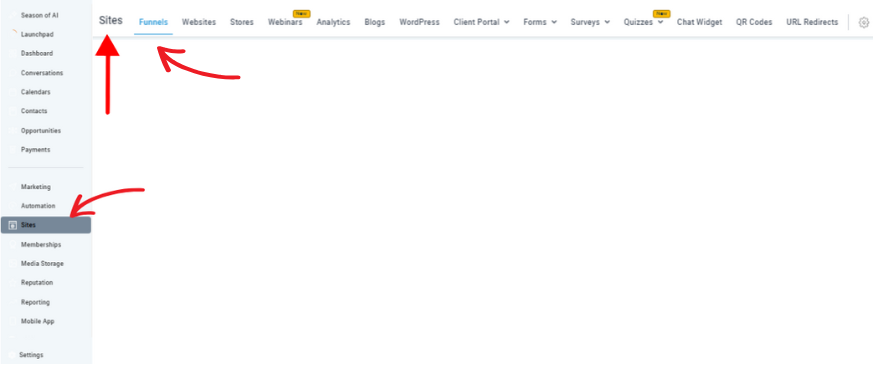

Starting from Scratch
While Go High Level provides a variety of pre-built templates to get you up and running quickly, you may prefer to select the “Start from Scratch” option for full control over your funnel design. Starting from scratch allows you to customize every element to meet your specific needs—from branding elements like colors, logos, and imagery to functionality, such as call-to-action buttons and form integration. This approach ensures that your funnel is fully tailored to your business objectives, helping you create a seamless experience that resonates with your audience and drives results.
Whether you’re building a sales page, lead magnet, or webinar funnel, the flexibility to design from the ground up gives you the freedom to bring your vision to life.
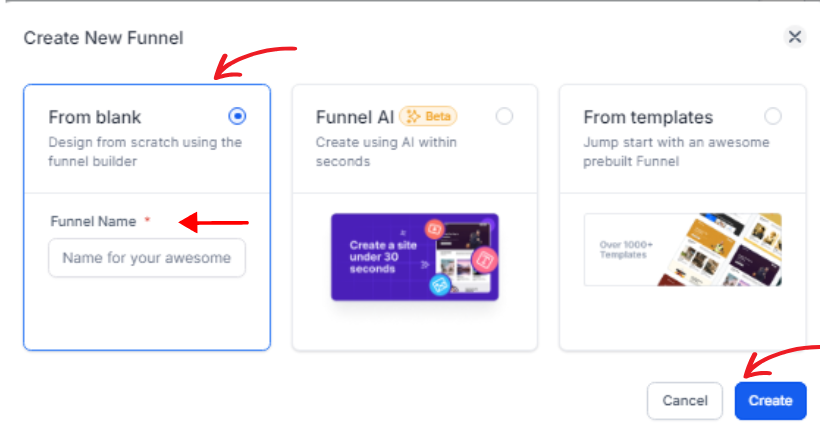
Step 3: Setting Up Funnel Stages
Defining Your Funnel Stages
Determine the stages of your funnel based on your specific goals and the type of customer journey you want to create. For example:
- A lead capture funnel is typically focused on collecting contact information, such as email addresses, and might have two simple stages: an opt-in page where visitors provide their details, followed by a thank-you page confirming their submission.
- A sales funnel, on the other hand, is designed to guide potential buyers through the purchasing process and usually involves more stages. This might include a landing page to introduce your product or service, a sales page with detailed information and a call-to-action, an upsell page offering additional products or services, and finally, a thank-you page to confirm the purchase and provide the next steps. By clearly defining each stage, you can create a smoother, more effective experience for your audience.
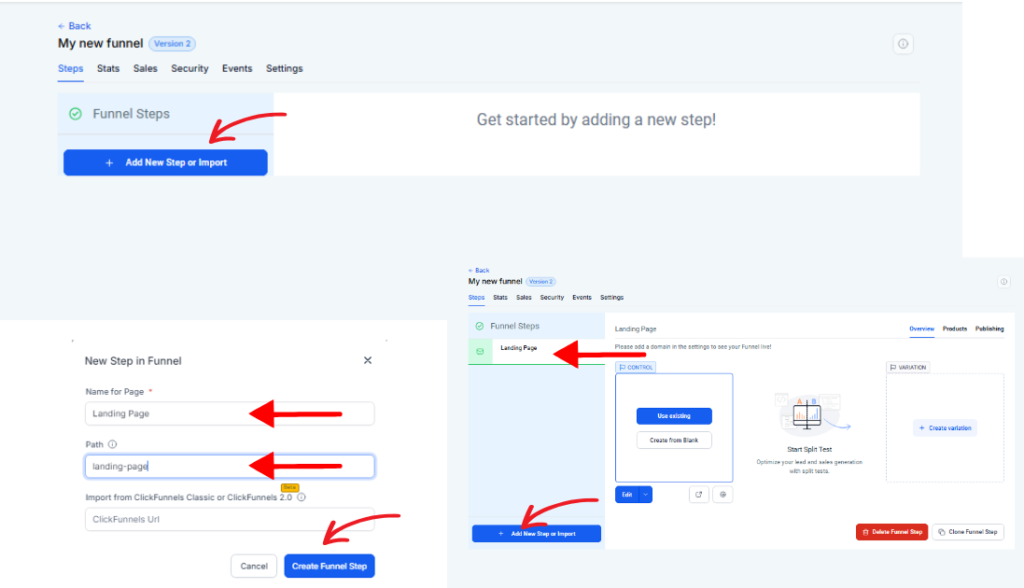
Naming Your Funnel and First Stage
Choose clear and descriptive names for your funnel and its stages to keep your dashboard organized and easy to navigate. By using specific and meaningful names, you’ll save time when reviewing or updating your funnels. For example:
- Funnel name: “January Lead Generation” – This name indicates the purpose of the funnel and the period it’s associated with.
- Stage name: “Landing Page – Free Ebook” – This stage name highlights exactly which part of the funnel it refers to and the offer being promoted.
Taking the time to name funnels and stages thoughtfully helps you quickly identify their purpose and track performance without confusion, especially as your projects grow.
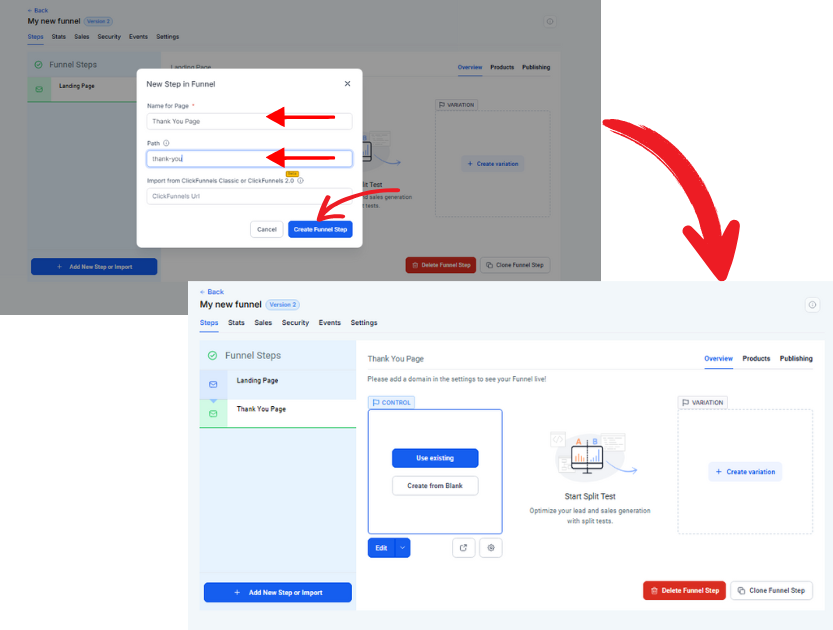
Step 4: Creating Your Funnel Pages
Adding and Customizing Pages
Once your funnel is named, it’s time to start building by adding pages. With Go High Level’s intuitive drag-and-drop page builder, you can easily create and customize layouts, adjust branding, and refine your text to suit your goals. This tool gives you complete creative control without requiring any coding skills.
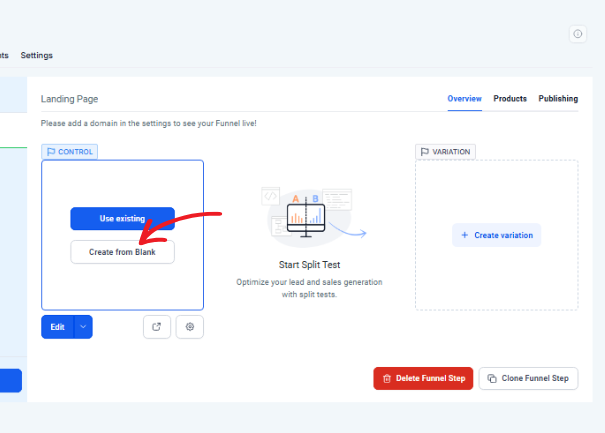
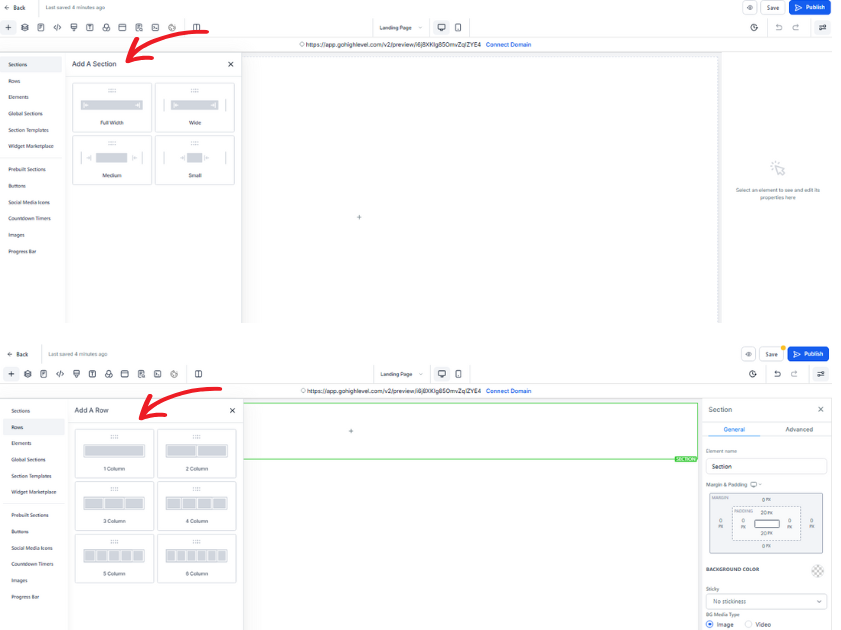
Here’s how to customize your pages effectively:
- Add engaging headlines that grab attention and pair them with eye-catching visuals to keep users interested.
- Focus on simplicity by including only essential elements. Too much clutter can distract visitors and reduce conversion rates.
- Maintain consistent branding across all funnel pages, including colors, fonts, and imagery, to reinforce your identity and build trust with your audience.
By taking these small but impactful steps, you can create a professional and cohesive funnel that resonates with your target audience and maximizes results.
Setting Up Opt-In Forms and Call-to-Action Buttons
Effective funnels rely on strong calls to action (CTAs) to guide visitors through each stage seamlessly. A well-designed opt-in form is a key element in this process.



Here are some tips to improve your opt-in form:
- Keep fields minimal to reduce friction, asking only for essential information like name and email. The fewer fields you include, the more likely visitors are to complete the form.
- Use action-oriented language that clearly tells users what they’ll get, such as “Get My Free Guide,” “Join the Community,” or “Start Now.” Make it enticing and specific to the value you’re offering.
- Ensure your form is integrated with tools like Go High Level’s CRM for smooth data collection and efficient lead management. This allows you to build relationships with leads immediately after they opt in.
By crafting CTAs that are clear and compelling, and aligning them with an optimized form, you can create a seamless experience that encourages visitors to take the next step.
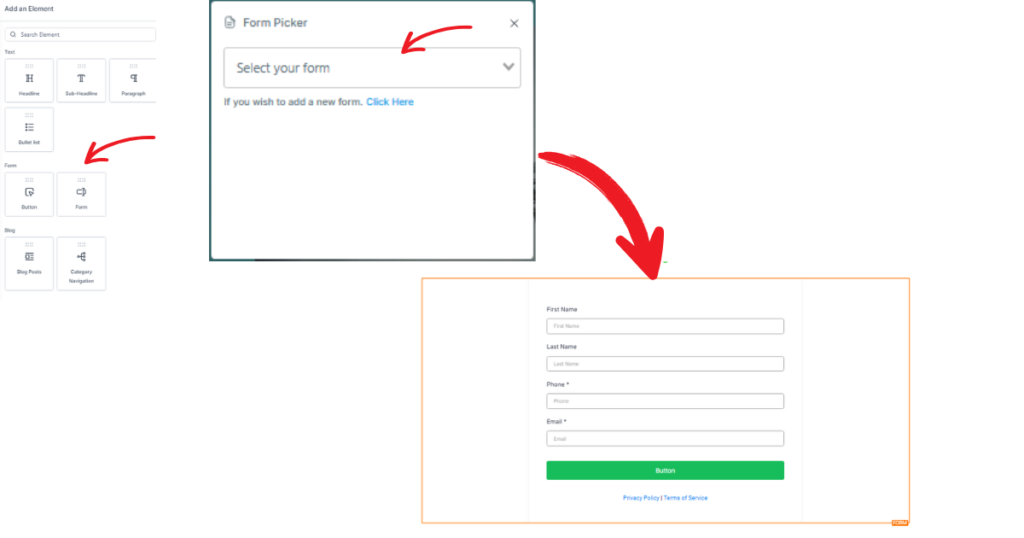
Step 5: Connecting Pages in Your Funnel
Defining the Flow Between Stages
Each page in your funnel should guide visitors seamlessly to the next step, creating a smooth and logical journey. For example:
- An opt-in page captures user information and leads to a thank-you page, where you can provide confirmation or additional instructions.
- A sales page should direct users to an upsell page, offering them complementary products or services, and then conclude with a confirmation page to finalize the purchase and provide reassurance.
With the Funnel Builder’s linking tool, you can easily connect these pages, ensuring a streamlined experience for your audience and optimizing your funnel’s performance.
Testing Your Funnel Flow
Before you start driving traffic, take the time to thoroughly test your funnel to ensure a smooth user experience:
- Click through each stage of the funnel to check for broken links or pages that don’t load properly.
- Test all calls-to-action (CTAs) and forms to make sure they function as intended, whether it’s submitting information or redirecting to the correct page.
- Look for any navigation errors, slow loading times, or design inconsistencies that could confuse or frustrate users.
A well-tested funnel not only improves user experience but also maximizes your chances of conversion.
Step 6: Adding Advanced Features
Incorporating Upsells and Downsells
Upsells are a powerful way to increase revenue by offering customers additional value-add products or services after they’ve made a purchase. These could include premium versions, extended warranties, or complementary items that enhance their original choice. Similarly, downsells provide budget-friendly alternatives for customers who may hesitate at higher price points, ensuring you don’t lose a sale entirely. By configuring these pages with conditional logic in Go High Level, you can personalize the offers based on user behavior, such as their purchase history, browsing patterns, or cart value. This tailored approach not only boosts conversions but also enhances the overall customer experience.
Setting Up Email Sequences for Funnel Leads
Go High Level is a powerful platform that allows you to automate follow-ups based on specific user actions, saving you time and ensuring timely communication. For example:
- After a user submits a form, you can set up an automated workflow to send a personalized welcome email within minutes, creating an immediate connection.
- You can nurture potential leads by scheduling a 5-part educational email series, gradually building trust and providing valuable information about your services or products.
With its built-in email automation feature, you can easily design and customize sequences to suit your business needs, ensuring every interaction feels seamless and professional. Whether you’re engaging new leads or keeping in touch with existing clients, Go High Level helps you stay efficient and effective.
Using Analytics and Tracking
Add tracking codes, such as Google Analytics or Facebook Pixel, to your funnel pages to effectively monitor key metrics like conversions, bounce rates, and page views. These tools provide valuable data on how users interact with your pages, allowing you to identify areas of improvement. By analyzing this information, you can make data-driven decisions to refine your funnel, optimize user experience, and ultimately boost performance. Regularly reviewing these insights will help you stay ahead and ensure your funnel meets its goals.
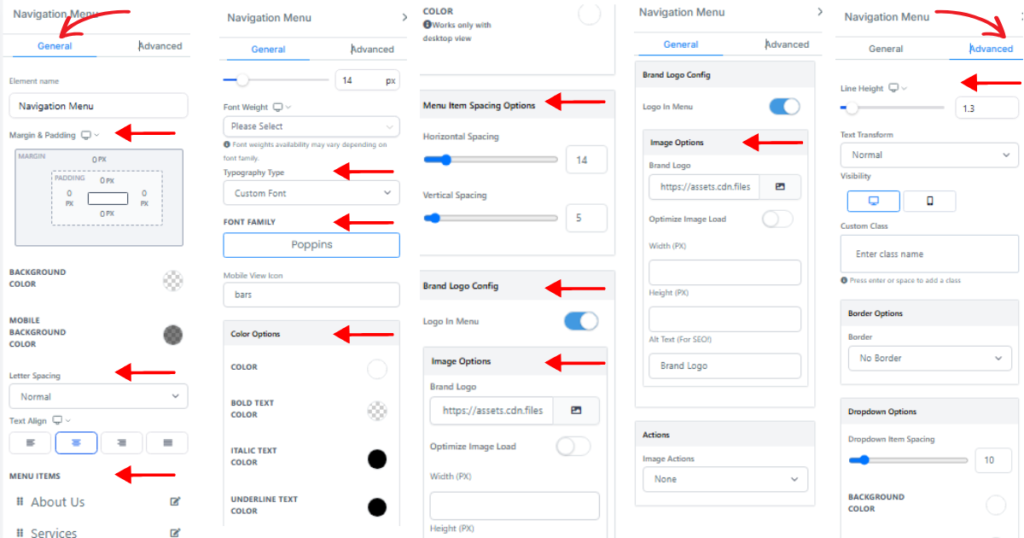
Step 7: Finalizing and Launching Your Funnel
Previewing and Testing Your Entire Funnel
Conduct a final test to ensure everything is working as intended:
- Carefully review every page for errors, broken links, or inconsistencies in design and content.
- Double-check that all forms, opt-ins, and purchase processes are functioning correctly and are being tracked accurately for analytics.
- Test on multiple devices and browsers to make sure the user experience is seamless everywhere.
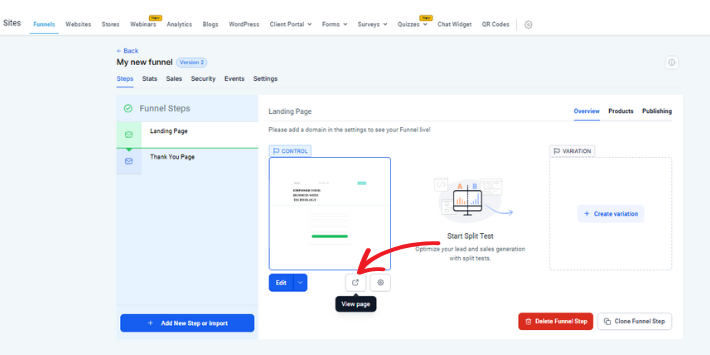
Publishing Your Funnel
When you’re confident everything is working smoothly and all elements of your funnel have been thoroughly tested, hit “Publish.” Once live, start promoting your funnel across multiple channels to drive traffic. Share it on social media platforms to reach your audience organically, send it out through email campaigns to engage your existing subscribers, or invest in paid ads to extend your reach further. After launching, continuously monitor your analytics to track performance and identify areas for improvement. Look for patterns in user behavior, optimize underperforming steps, and fine-tune your strategy to maximize results over time.
FAQs
Do I need any prior technical knowledge to create a funnel with Go High Level?
No, Go High Level is designed to be user-friendly and intuitive. You don’t need extensive technical knowledge to create a funnel. The platform provides a drag-and-drop builder, making it easy to customize each stage of your funnel without any coding skills.
Can I integrate Go High Level with other tools and platforms I’m already using?
Yes, Go High Level offers various integrations with popular tools and platforms, allowing you to seamlessly connect your existing tech stack. Whether it’s integrating with your CRM, email marketing software, or other third-party apps, Go High Level provides flexibility to work with your preferred tools.
Can I track the performance of my funnel using Go High Level?
Absolutely! Go High Level provides robust analytics and reporting features that allow you to track the performance of your funnel in real-time. You can monitor key metrics, identify bottlenecks, and make data-driven decisions for optimizing your funnel’s performance.
Can I create multiple funnels for different marketing campaigns or business offerings?
Go High Level allows you to create multiple funnels to cater to different marketing campaigns or business offerings. Whether you have multiple products, services, or marketing initiatives, you can easily manage and customize separate funnels within the platform.
Is Go High Level suitable for both small businesses and larger enterprises?
Yes, Go High Level caters to businesses of all sizes. Whether running a small business or a larger enterprise, the platform offers the tools and scalability needed to create, manage, and optimize your funnels effectively.
Make the Most of Go High Level’s Funnel Builder
Building a sales funnel from scratch might seem daunting, but with Go High Level, the process is both intuitive and rewarding. Their platform simplifies each step, allowing you to create a funnel customized to your business needs. By tailoring every stage—from capturing leads to nurturing prospects and closing sales—you can significantly boost engagement and improve conversions.
Go High Level offers a variety of tools, from drag-and-drop builders to automation features, making it easy to design a funnel that aligns with your goals. Whether you’re focusing on email marketing, SMS outreach, or social media campaigns, the platform has everything you need to streamline your efforts and maximize results.
Start creating your funnel today and experience the difference it can make for your lead generation and sales strategy. If you’re new to Go High Level, sign up for their free trial and unlock the flexibility and power of their tools. Don’t miss the opportunity to take your business to the next level! For further help and assistance feel free to Contact Us!
